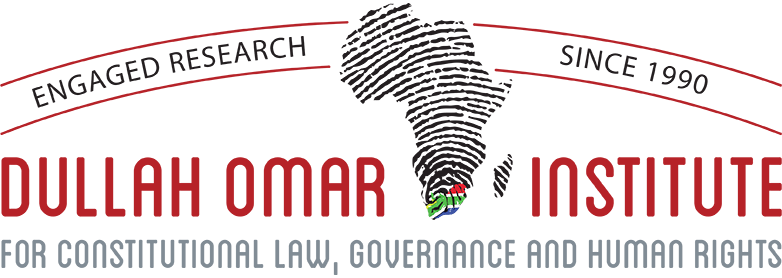How adequate is the Local Government Equitable Share grant in the face of escalating costs of municipal service delivery?
Unlike provincial governments, local municipalities generally have access to significant own revenue sources such as property rates and tariffs for the provision of services such as water, sanitation and electricity. However, fiscal capacity can vary markedly within the local government sphere – from the metropolitan municipalities in large cities with high concentrations of economic activity and employment opportunities and therefore substantial own revenue bases, to small rural towns with low levels of economic activity and high concentrations of poverty and unemployment. In order to provide basic services to indigent households and as a substitute for own revenues, local municipalities are accorded an ‘equitable share’ of tax revenues raised at national level by the South African Revenue Service in terms of section 214 of the Constitution. Each year there is a revenue-sharing process whereby debt service costs are top-sliced from the pool of nationally collected revenue, and the remainder is split among national, provincial and local government (the ‘vertical division of revenue’). The pool of funds accruing to the local government sphere is then allocated to each local municipality through a transparent formula, and the Local Government Equitable Share Grant (LGES) which will be transferred to each municipality is published annually in the Division of Revenue Bill which accompanies the tabling of the national Budget.
The challenges with the LGES relate to its adequacy and stability. In recent years, the LGES grant has not kept pace with escalating costs of employment or increasing bulk services costs. The costs of employment of personnel is centrally bargained and fall outside the influence of individual municipalities. Similarly, the regulatory decisions of the National Energy Regulator of South Africa (NERSA) determine the costs of bulk electricity purchased from Eskom and the price which municipalities may charge their electricity users. For the 2020/2021 financial year, NERSA indicated a 6.9% Eskom electricity tariff and a 6.23% average electricity tariff for municipalities, which inhibits municipalities from passing on the full increase in ESKOM bulk charges to their service users. As discussed elsewhere in the Bulletin, this resulted in the erosion of electricity surpluses in many municipalities, which undermined their ability to fund new infrastructure, upgrades and rehabilitation, or to cross-subsidise other services. A court case between ESKOM and the energy regulator, NERSA, had introduced an element of uncertainty for municipalities regarding bulk electricity prices in 2020/2021.
The local government share of nationally collected revenue (arising from the vertical division of revenue) had risen from 3% in 2000 (R6 billion) to 8.9% in 2018/2019, but fell to 8.3% in 2018/19. This share increased again to 9% in 2021/2022, and is anticipated to rise further to 9.7% in 2023/2024. While this aggregate allocation to local government takes into consideration the own revenue-raising capacity of municipalities, the Financial and Fiscal Commission (FFC) noted that the fairness of this vertical division of revenue has remained a bone of contention, especially given that the demand for local government services has expanded significantly in the past two decades.
Due to fiscal consolidation imperatives and the COVID-19 pandemic induced fiscal constraints, in Budget 2021, the amounts flowing to municipalities via the LGES were reduced by R14.7 billion and the amounts from general fuel levy sharing with metropolitan municipalities were reduced by R2.7 billion.
During the interviews in a study on municipal fiscal sustainability completed in April 2021 by the School for Public Leadership at Stellenbosch University in partnership with the Hanns Seidel Foundation, officials from rural municipalities in the Western Cape expressed concern that cost disabilities of rural municipalities (which are largely outside their control) were not adequately taken into consideration in LGES. They also raised the concern that the LGES appears to be overly focused on Free Basic Services and not the other services municipalities provide. For the last three years, most of the municipalities in the Western Cape which were sampled had instituted stringent cost-containment measures and officials argued that further cuts could compromise service delivery.
The vertical division of revenue determines the aggregate amount of the nationally collected revenue and the LGES formula ensures that this is distributed among individual municipalities, based on three components:
- a Basic Services (BS) component - which covers the cost of providing free basic services based on the number of eligible households and the estimated cost of providing these services),
- an Institutional and Community Services (I&CS) Component (modified by a revenue adjustment factor) - which contributes towards administrative costs of a municipality (proxied by the number of councillors) as well as collective services such as municipal health, fire, roads, cemeteries, planning, stormwater management street lighting and parks (proxied by the total number of households in the municipality). In order to prioritise municipalities which are least able to raise own revenues, municipalities are ranked in terms of an index which aims to capture their own revenue-raising capability. The top 10% of municipalities receive zero I&CS component while the bottom 25% receive the full I&CS component and those in between receive a pro-rated amount based on a sliding scale. Because some municipalities in the Western Cape have significant own revenue resources, their I&CS allocations tend to be vastly reduced by the revenue adjustment factor.
- A Correction and Stabilisation (C) factor to ensure a degree of stability in each municipality’s allocation over the Medium Term Revenue and Expenditure Framework (MTREF) period.
The BS component is ‘kept fixed and the per councillor and per household allocations for the I and CS components are adjusted up or down. In other words, higher BS allocations will result in lower I and Cs allocations’. This means that while the BS component is related to expected costs of provision, the I&CS and C components are merely a balancing residual to ensure that the total local government share is fully allocated, and that the total local government share determined by the vertical division is not exceeded. The link between costs of these collective services and formula is therefore tenuous at best.
Moreover, the administrative component does not directly factor in the cost of increases in the administrative compliance burden such as the complicated and often duplicated reporting requirements, implementation of the municipal Standard Chart of Accounts and the proliferation of other administrative requirements from other spheres of government. The gap between the ‘reasonable’ efficient cost of delivering collective services to low-income and indigent households and the grant revenue actually received could contribute a transfer funding gap, or a partially funded mandate.
Arguments disputing the inadequacy of the LGES point out that municipalities often do not exploit their own revenue sources, preferring to remain dependent on intergovernmental grants instead. While municipalities do not have control over the salaries and conditions of employment of their staff as these are centrally bargained by SALGA, it could be argued that they do have control over staff headcount, and that ‘fat’ still exists in personnel budgets. Counter-arguments also point to the high degree of inefficiency in municipal spending (including unacceptably high levels of water and electricity technical losses and theft), as well as fraud and corruption.
Due to the protracted duration of the COVID-19 pandemic and its associated losses of jobs and livelihoods, the fiscal bases of municipalities are being further impaired. It is clear therefore that the contentious issue of the LGES adequacy is likely to become even more so. With politically high profiled state-owned entities like Eskom and SAA standing in line for bail-outs, calls for expansion of the social security system and a basic income grant, and the need to fund the National Health Insurance, the probability of local government receiving significant additional resources in the medium term is slim, unless growth rebounds substantially.
By Prof Tania Ajam School for Public Leadership, Stellenbosch University






